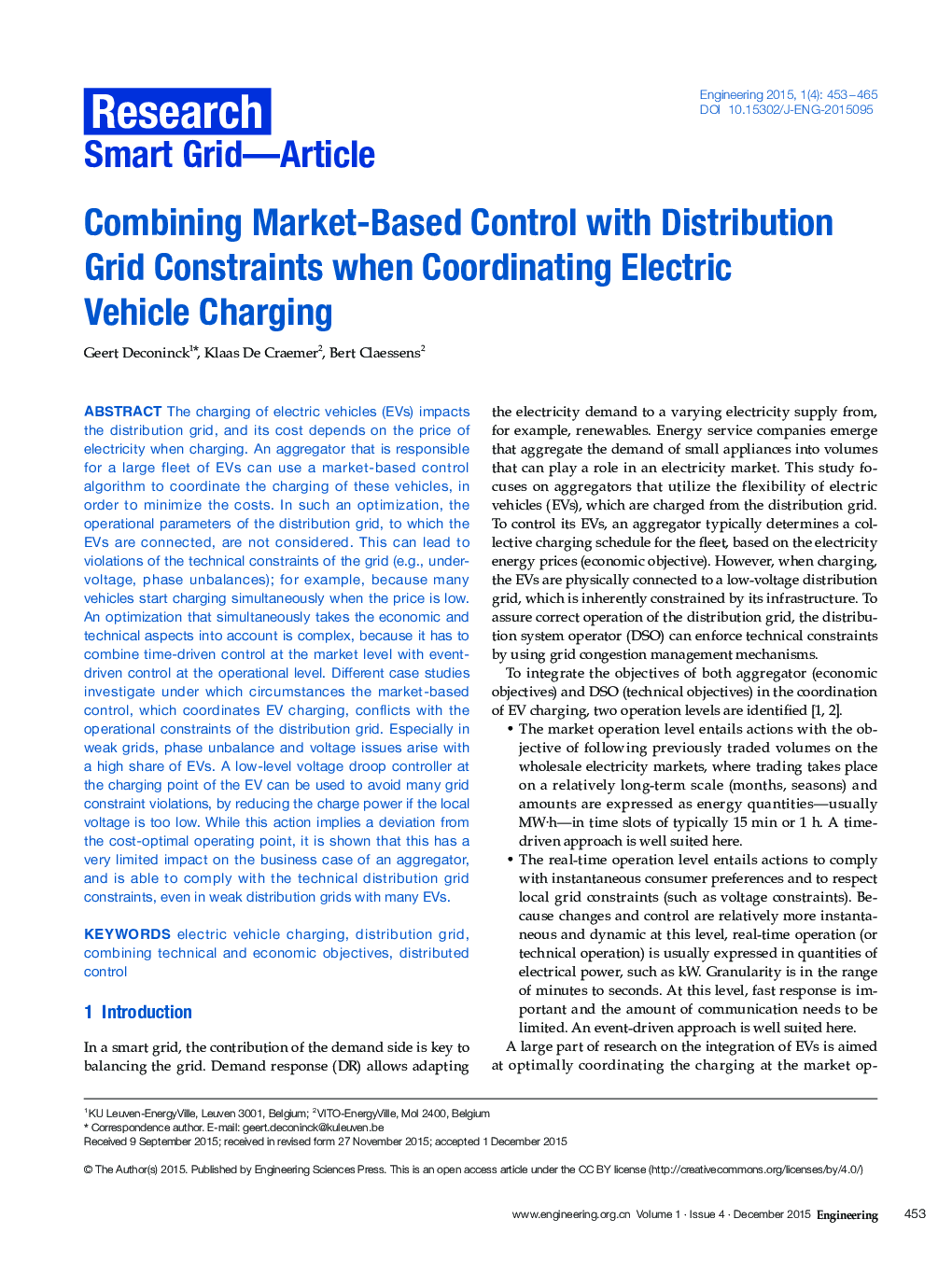| Article ID | Journal | Published Year | Pages | File Type |
|---|---|---|---|---|
| 477434 | Engineering | 2015 | 13 Pages |
ABSTRACTThe charging of electric vehicles (EVs) impacts the distribution grid, and its cost depends on the price of electricity when charging. An aggregator that is responsible for a large fleet of EVs can use a market-based control algorithm to coordinate the charging of these vehicles, in order to minimize the costs. In such an optimization, the operational parameters of the distribution grid, to which the EVs are connected, are not considered. This can lead to violations of the technical constraints of the grid (e.g., under-voltage, phase unbalances); for example, because many vehicles start charging simultaneously when the price is low. An optimization that simultaneously takes the economic and technical aspects into account is complex, because it has to combine time-driven control at the market level with event-driven control at the operational level. Different case studies investigate under which circumstances the market-based control, which coordinates EV charging, conflicts with the operational constraints of the distribution grid. Especially in weak grids, phase unbalance and voltage issues arise with a high share of EVs. A low-level voltage droop controller at the charging point of the EV can be used to avoid many grid constraint violations, by reducing the charge power if the local voltage is too low. While this action implies a deviation from the cost-optimal operating point, it is shown that this has a very limited impact on the business case of an aggregator, and is able to comply with the technical distribution grid constraints, even in weak distribution grids with many EVs.
